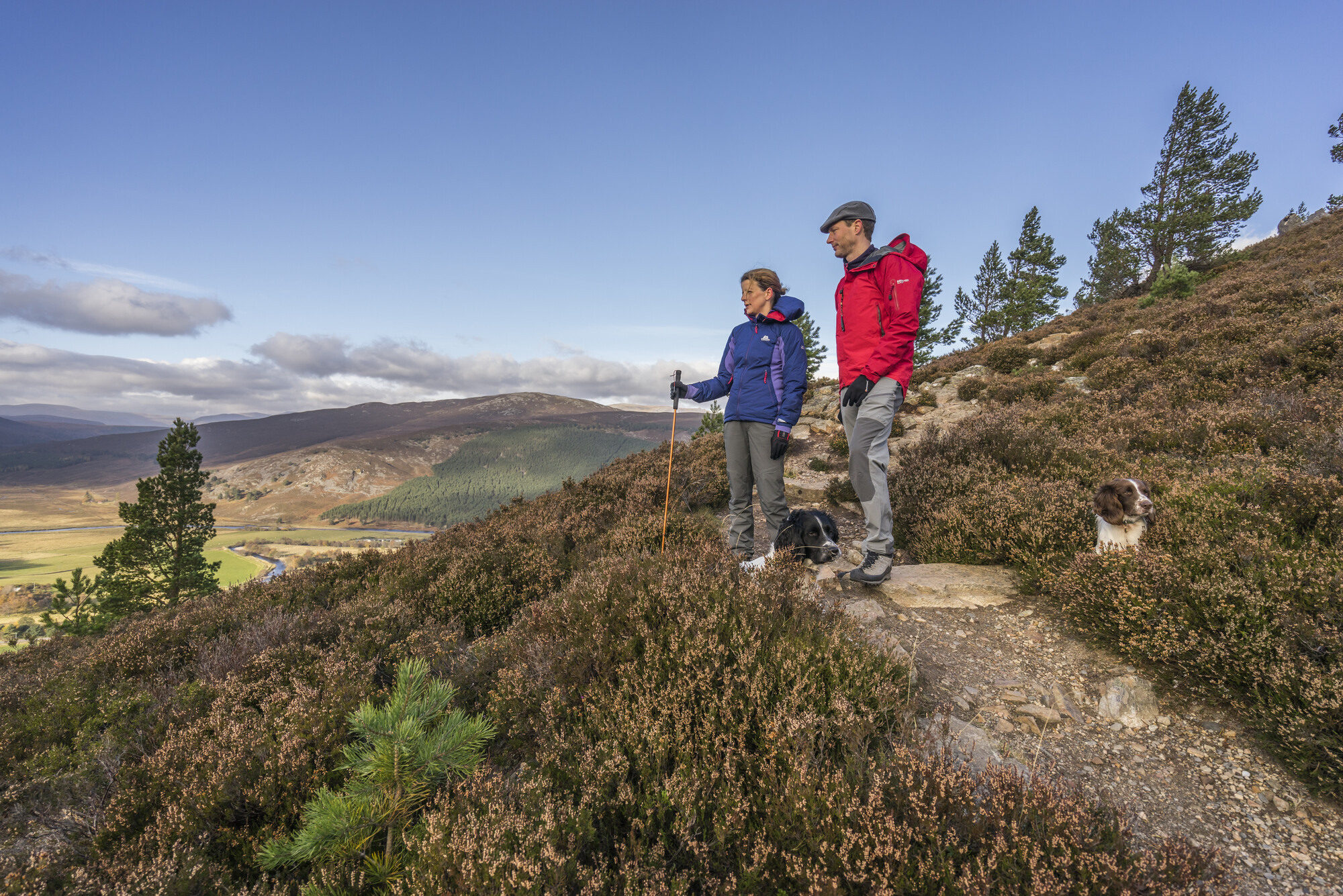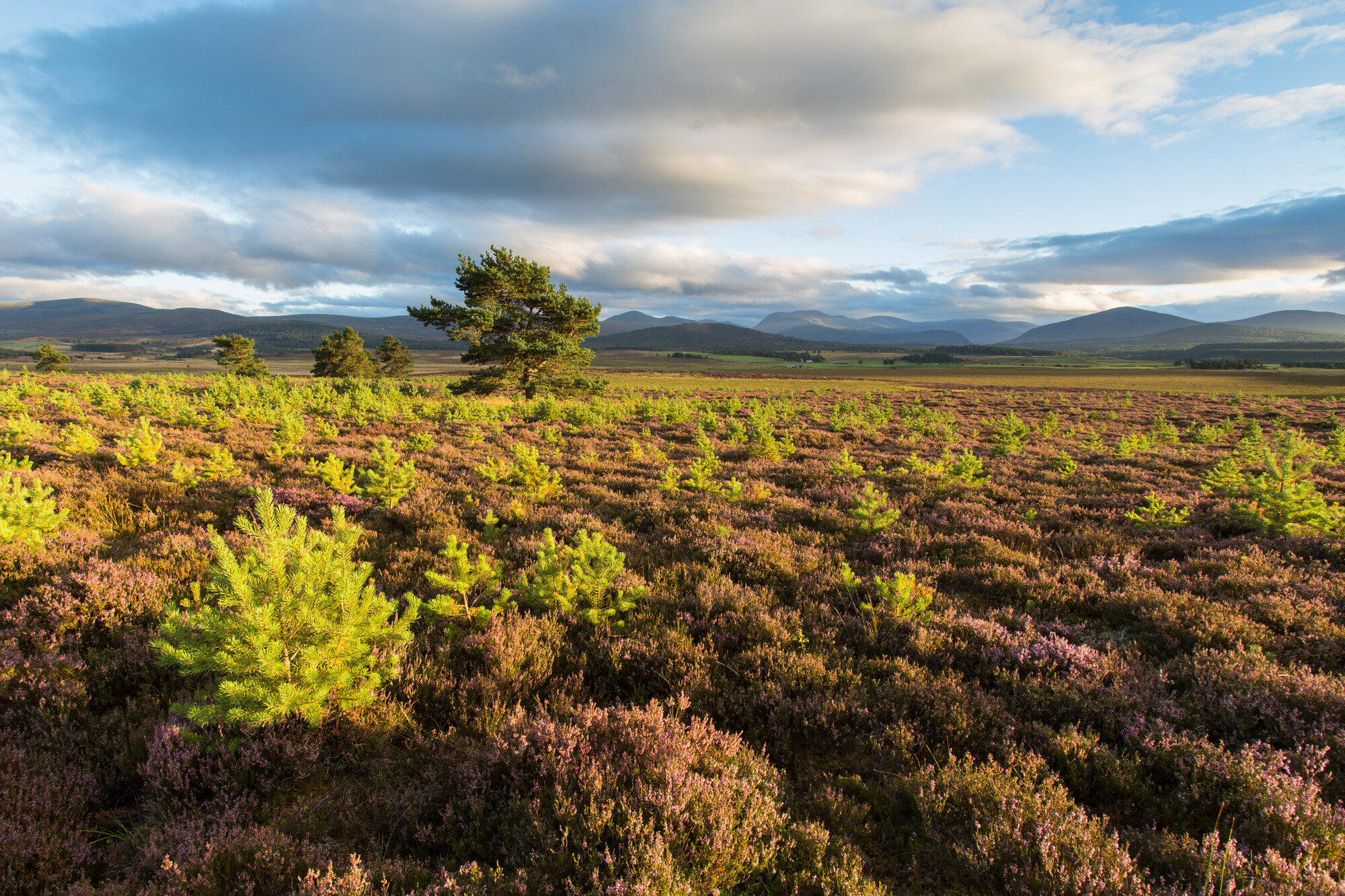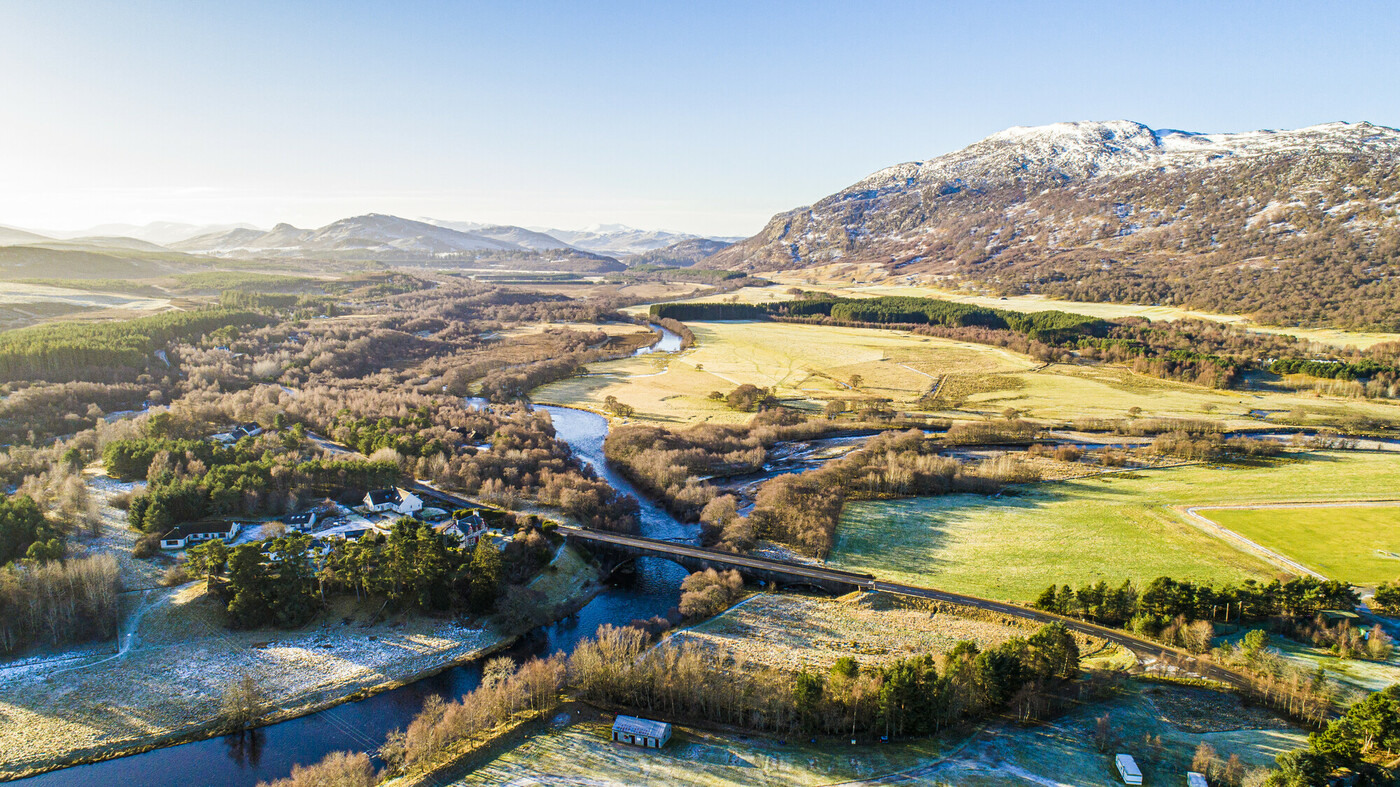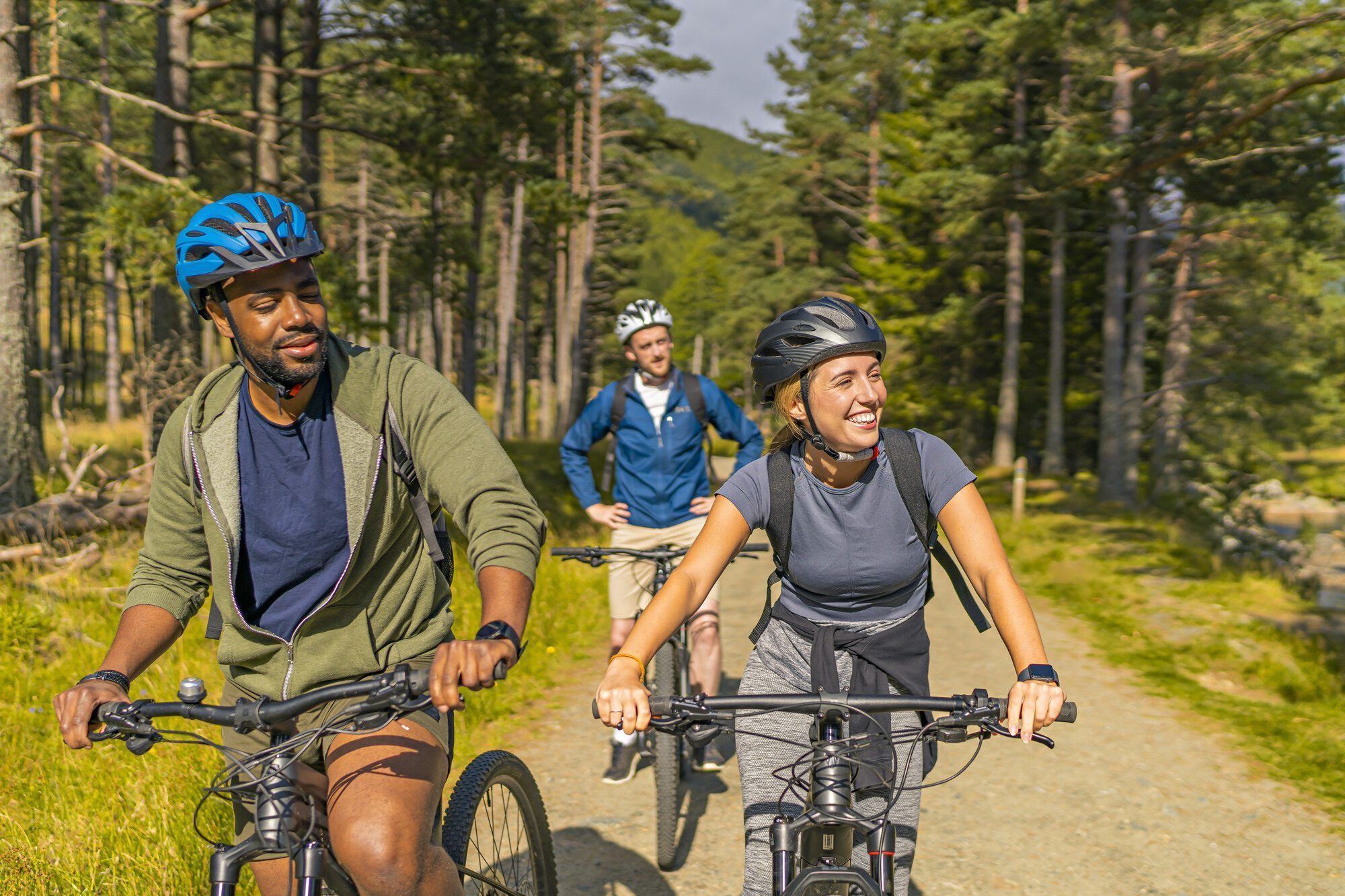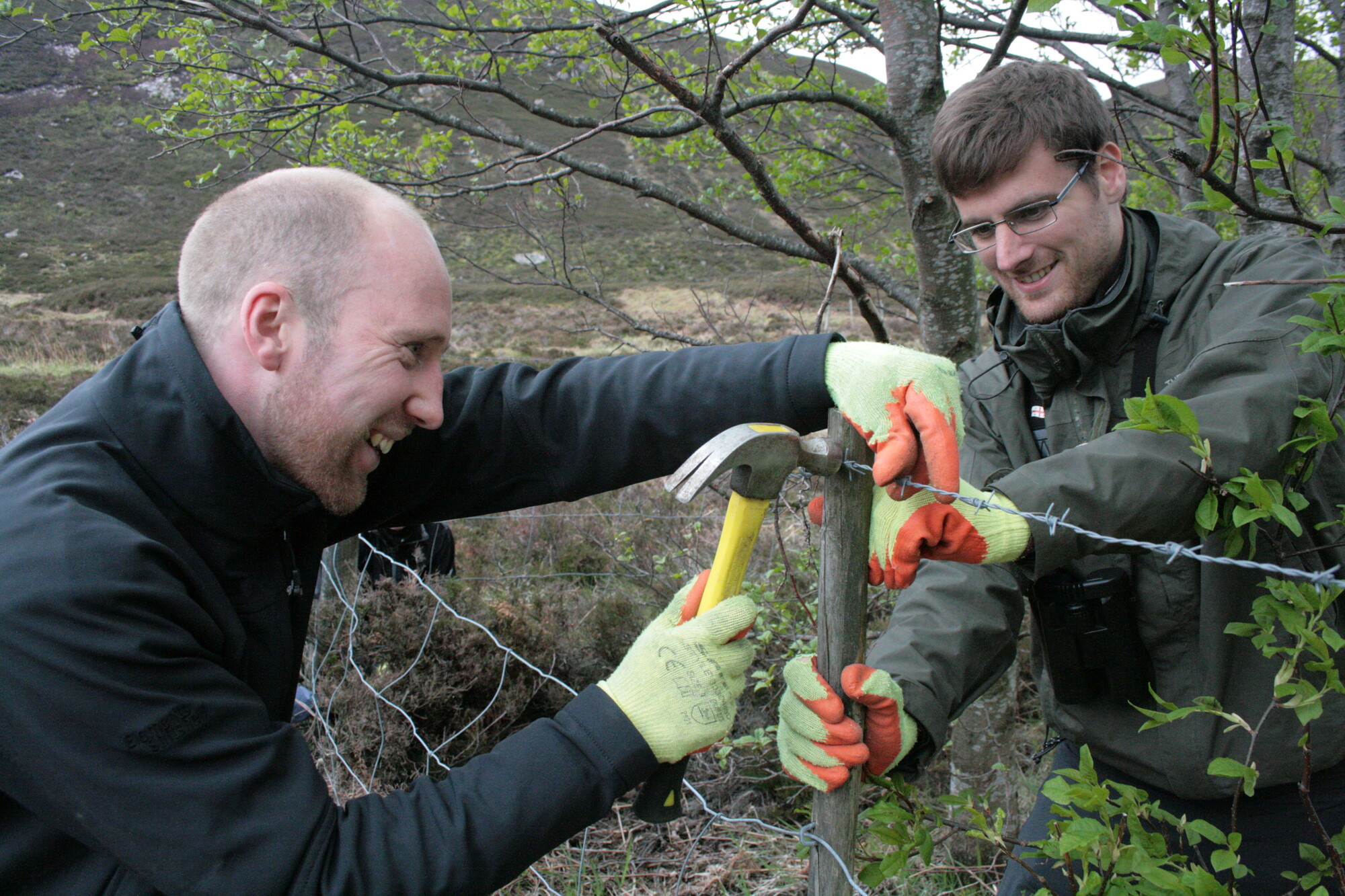Formal board meeting - paper 3 annex 1 - Partnership Plan annual update - 26 September 2025
Cairngorms National Park Authority Ughdarras Pàirc Nàiseanta a’ Mhonaidh Ruaidh
Formal Board Paper 3 Annex 1 26 September 2025 Page 1 of 16
Annex 1
| NPPP Nature Objective | Indicator(s) | Target | RAG rating and Data trend (↗ ↘ ↔) | Comment Summary to Summer 2025 |
|---|---|---|---|---|
| A1. Net Zero Ensure the Cairngorms National Park reaches net zero as soon as possible and contributes all it can to helping Scotland meet its net zero commitments. | Annual independent progress report on net zero for the Cairngorms National Park Small World Consulting (SWC). | Maintain progress to the National Park becoming net zero and then a net carbon store | ↗ | SWC National Parks carbon tracker tool should be available September 2025. Data inputs on woodland creation and peatland restoration exceed targets needed to meet route to net zero. |
| A2. Woodland Expansion Increase the amount of woodland in the National Park to support larger, more natural woodlands, expanding in places up to a natural treeline, providing connections across river catchments and around the central core of the mountains. | Hectares (Ha) new woodland creation approved | 35,000 Ha by 2045 | ↗ | 2024⁄25 = 1252Ha 2023⁄24 = 2658Ha 2022⁄23 = 402Ha |
Cairngorms National Park Authority Ughdarras Pàirc Nàiseanta a’ Mhonaidh Ruaidh
Formal Board Paper 3 Annex 1 26 September 2025 Page 2 of 16
| NPPP Nature Objective | Indicator(s) | Target | RAG rating and Data trend (↗ ↘ ↔) | Comment Summary to Summer 2025 |
|---|---|---|---|---|
| A3. Peatland Restoration Restore and manage peatland within the National Park to reduce carbon emissions and improve biodiversity. | Ha peatland restored year-on-year. | 38,000 Ha peatland restored by 2045. | ↗ | 2024⁄25 = 2181Ha 2023⁄24 = 1345Ha 2022⁄23 = 1080Ha |
| A4. Deer and herbivore impacts Reduce the negative impacts of red deer and other herbivores across the National Park to enable woodlands to expand, heather loss to be reversed, peatlands to recover and wider biodiversity and landscape enhancements to take place. | Impact of herbivores on Partnership Plan ecological restoration targets. Average open range deer densities / deer management group. | Average open range Red Deer densities in each Deer Management Group (DMG) are max five to eight deer / km2 by 2030. | ↗ | Two of the five DMGs are within the five to eight deer / km2 range. One DMG is almost within that range and is modelled to reach it before 2030. Two DMG’s are significantly above the target density but with management to reduce densities. |
| A5. Moorland management Increase the sustainability of moorland management in the National Park to ensure greater species and structural diversity in moorland areas of the National Park. | Species and habitat diversity. | Increase in home range occupation and breeding success of golden eagle, hen harrier, | ↗ | Cairngorms Nature Index will provide data on species and habitat diversity. |
Cairngorms National Park Authority Ughdarras Pàirc Nàiseanta a’ Mhonaidh Ruaidh
Formal Board Paper 3 Annex 1 26 September 2025 Page 3 of 16
| NPPP Nature Objective | Indicator(s) | Target | RAG rating and Data trend (↗ ↘ ↔) | Comment Summary to Summer 2025 |
|---|---|---|---|---|
| A6. Gamebird management Ensure that all pheasant and partridge shoots adhere to best practice and that all gamebird releases are sustainable and do not negatively impact on native biodiversity. | Impacts of gamebirds released around National Park each year. | Gamebird releases have no negative impacts on native biodiversity. | ↗ | Established a baseline of gamebird release numbers through Game and Wildlife Conservation Trust (GWCT) report in 2025. |
| A7. Fire management Ensure that all managed burning (muirburn) follows best practice as defined by the muirburn licensing scheme, supporting habitat restoration and recovery. | All muirburn will comply with license conditions. | Number incidents of non-compliance with muirburn licence conditions. | ↗ | Integrated Wildfire Management Plan approved in 2025. Fire byelaw programmed for implementation from April 2026. |
| A8. Farming Work with farms in the National Park to reduce their carbon footprint, conserve soil carbon, encourage sustainable production and deliver increased biodiversity on in-bye land. | Percentage of farms with carbon audits within National Park. | All farms have carbon audits and biodiversity plans | ↗ | By 2028 all farms will require to have a whole farm plan that includes both a biodiversity audit and carbon audit in order to claim rural payments. The requirement for parts of the whole farm plan began in 2025. |
Cairngorms National Park Authority Ughdarras Pàirc Nàiseanta a’ Mhonaidh Ruaidh
Formal Board Paper 3 Annex 1 26 September 2025 Page 4 of 16
| NPPP Nature Objective | Indicator(s) | Target | RAG rating and Data trend (↗ ↘ ↔) | Comment Summary to Summer 2025 |
|---|---|---|---|---|
| A9. Freshwater systems Restore and connect rivers to thriving wetlands and floodplains as part of a wider restoration of the National Park’s freshwater systems, helping mitigate the impacts of climate change. | Percentage of rivers in Good Ecological Condition. | 70% of rivers in good ecological condition. | ↗ | 68% of rivers continue to be in good ecological condition. https://www.ruralpayments.org/topics/agricultural-reform-programme/whole-farm-plan-quick-guide/ |
| A10. Ecological network Connect habitats and ecosystems across all different types of land use in the National Park to create an ecological network, which will bring wider landscape biodiversity and people benefits. | Establish a framework for ecological network by 2025. | Establish a framework for ecological network by 2025. | ↗ | Framework for Nature Network being established via Local Development Plan in 2025. |
Cairngorms National Park Authority Ughdarras Pàirc Nàiseanta a’ Mhonaidh Ruaidh
Formal Board Paper 3 Annex 1 26 September 2025 Page 5 of 16
| NPPP Nature Objective | Indicator(s) | Target | RAG rating and Data trend (↗ ↘ ↔) | Comment Summary to Summer 2025 |
|---|---|---|---|---|
| A11. Ecological restoration Improve ecosystem functionality and resilience across the National Park by increasing the area of land managed principally for ecological restoration. | Increase the percentage of land in National Park managed principally for ecosystem restoration (baseline 2023). | 50% of National Park managed principally for ecosystem restoration by 2045. | ↗ | 2024⁄25 = 29% 2023⁄24 = 27% 2022⁄23 = 23% (based on draft criteria) |
| A12. Cairngorms Nature Index Develop a more complete understanding of the National Park’s species, habitats and ecosystems, and help monitor long-term progress through a dedicated Cairngorms Nature Index (CNI). | Number of CNI ecosystems completed. | Develop CNI by 2024. | ↗ | One ecosystem completed. Progress slower than expected due to complexity of data and availability of expert staff. Expected completion during 2026. |
| A13. Species Recovery Ensure species thrive in the National Park with key assemblages across the Cairngorms within the semi-natural landscape. | Progress towards recovery curve target for each of the 29 priority species. | All priority species progressing on species recovery curve. | ↗ | Final Report on Cairngorms Nature Action Plan (CNAP) establishes progress. Next CNAP will identify new targets. |
Cairngorms National Park Authority Ughdarras Pàirc Nàiseanta a’ Mhonaidh Ruaidh
Formal Board Paper 3 Annex 1 26 September 2025 Page 6 of 16
| NPPP Nature Objective | Indicator(s) | Target | RAG rating and Data trend (↗ ↘ ↔) | Comment Summary to Summer 2025 |
|---|---|---|---|---|
| A14 Green Investment Use private green investment in the National Park to fund nature’s recovery and share the benefits between communities, landowners, workers and wider society. | Increasing green finance per annum for projects that deliver multiple benefits. | Increase Ha of Peatland Code and Woodland Code registered land. | ↗ | Have requested Peatland Code and Woodland Code registration data. |
| NPPP People Objective | Indicator(s) | Target | RAG rating and Data trend (↗ ↘ ↔) | Comment Summary to Summer 2025 |
|---|---|---|---|---|
| B1. Working-age population The proportion of young and working-aged people in the National Park increases relative to the total resident population, which remains stable. | Proportion of young people and working-aged people resident in the National Park. | Maintain the proportion of young people and working-aged people resident in the National Park. | ↘ | Proportion of young and working-aged people resident in the National Park is dropping based on 2022 Census results. |
Cairngorms National Park Authority Ughdarras Pàirc Nàiseanta a’ Mhonaidh Ruaidh
Formal Board Paper 3 Annex 1 26 September 2025 Page 7 of 16
| NPPP People Objective | Indicator(s) | Target | RAG rating and Data trend (↗ ↘ ↔) | Comment Summary to Summer 2025 |
|---|---|---|---|---|
| B2. Wellbeing economy Develop a wellbeing economy that delivers social justice in a healthy ecosystem, drawing on the special natural and cultural qualities of the Cairngorms. | Wellbeing Economy Action Plan and Wellbeing Economy Cornerstone Indicators. | Develop Wellbeing Economy Action Plan and Wellbeing Economy Cornerstone Indicators by 2023. | ↗ | Wellbeing Economy Action Plan approved November 2024. Wellbeing Economy Indicators are NPPP Indicators. |
| B3. Real living wage Increase the number of Real Living Wage employers in the National Park. | Number of Real Living Wage accredited employers in the National Park. | Increase number real living wage employers. | ↗ | Increase in number of Real Living Wage accredited employers in the National Park from nine in 2022 to 20 in 2025. |
| B4. Skills and training Increase skills and training opportunities for people in the National Park to meet business needs and ensure opportunities created by the growth in green jobs can be filled by residents and under-represented groups. | Number of apprenticeships in the National Park. Number of people employed in green jobs. | Increasing number apprenticeships in the National Park. Increasing number of | ↗ | Apprenticeship data in the National Park is too small to be published. National definitions of green jobs provide a very coarse classification that encompasses many sectors and attributes existing jobs as green jobs. |
Cairngorms National Park Authority Ughdarras Pàirc Nàiseanta a’ Mhonaidh Ruaidh
Formal Board Paper 3 Annex 1 26 September 2025 Page 8 of 16
| NPPP People Objective | Indicator(s) | Target | RAG rating and Data trend (↗ ↘ ↔) | Comment Summary to Summer 2025 |
|---|---|---|---|---|
| people employed in green jobs. | ||||
| B5. Community assets and land Increase the number of assets in community ownership or management, the number of social enterprises that generate a profit and the area of land where communities are involved in management decisions. | Number of assets in community ownership or management. | Year on year increase in number of assets in community ownership or management | ↗ | increase in number of assets from 71 to 99 by 2024. |
| B6. New approaches to citizen participation Strengthen the participation structures that support planning and decision-making at a local level. | Test new approaches as part of Cairngorms 2030 programme. | Test new approaches as part of Cairngorms 2030 programme. | ↗ | Work underway to explore new approaches to citizen participation as part of Cairngorms 2030 programme. |
Cairngorms National Park Authority Ughdarras Pàirc Nàiseanta a’ Mhonaidh Ruaidh
Formal Board Paper 3 Annex 1 26 September 2025 Page 9 of 16
| NPPP People Objective | Indicator(s) | Target | RAG rating and Data trend (↗ ↘ ↔) | Comment Summary to Summer 2025 |
|---|---|---|---|---|
| B7. Community-led planning and development Communities have up- to-date community action plans and are supported by a community-led local development funding programme, delivering the NPPP. | Percentage of communities which have Community Action Plans (CAP) in place that are no more than five years old and value of Community-led Vision (CLV) funding | All communities have CAPS than are no more than five years old. Funding for communities is available at least equivalent to historic LEADER programme. | ↗ | All communities have up to date CAPs and CLV funding has continued on an annual basis though with varying budgets from Scottish Government (SG). |
| B8. Gaelic language and culture Encourage greater use of Gaelic in the National Park. | Public Sector Gaelic language plan reporting. | More opportunities for individuals and communities to engage with Gaelic language and culture | ↗ | All public bodies have Gaelic language plans. National Park Brand now closely linked with Gaelic and National Gaelic Tourism Plan increasing awareness and of and contribution of Gaelic for visitors. |
Cairngorms National Park Authority Ughdarras Pàirc Nàiseanta a’ Mhonaidh Ruaidh
Formal Board Paper 3 Annex 1 26 September 2025 Page 10 of 16
| NPPP People Objective | Indicator(s) | Target | RAG rating and Data trend (↗ ↘ ↔) | Comment Summary to Summer 2025 |
|---|---|---|---|---|
| B9. Mental and Physical health Improve the mental and physical health and wellbeing of the people of the National Park through greater connection with nature and the outdoors. | Percentage of National Park GP practices with Green Health Referral programmes in place and number of Green Health referrals taking place. | Green Health referrals in all GP practices in National Park. | ↗ | All GP practices in Highland Council now have Green Health referral programmes in place. Green Health referrals increased from three in 2023 to 39 in 2024. |
| B10. A Park for All There will be better opportunities for everyone to enjoy the National Park, and the visitor profile will be more diverse, especially with regards to people who are disabled, from lower socio-economic groups, LGBTQ+ and from minority and ethnic groups. | Percentage of visitors from Black and global majority groups. | Close to demography of Scottish population. | ↗ | Scotland’s People and Nature Survey (SPANS) run by NatureScot surveys Scottish residents on their visits to the outdoors includes questions about the Cairngorms National Park and in 2023⁄24, recorded 9% of people who identified as from black and global majority groups had recently visited the Cairngorms National Park. |
Cairngorms National Park Authority Ughdarras Pàirc Nàiseanta a’ Mhonaidh Ruaidh
Formal Board Paper 3 Annex 1 26 September 2025 Page 11 of 16
| NPPP People Objective | Indicator(s) | Target | RAG rating and Data trend (↗ ↘ ↔) | Comment Summary to Summer 2025 |
|---|---|---|---|---|
| B11. Volunteering and outdoor learning Increase the number of volunteer days spent caring for the National Park, taking an inclusive approach to volunteering recruitment. | Number of Volunteer Rangers (200 by 2030) | 200 Volunteer Rangers by 2030. | ↗ | Number of active Volunteer Rangers increasing year on year since: 2022÷23−30 2023⁄24 — 64 2024⁄25 — 87 |
| NPPP Place Objective | Indicator(s) | Target | RAG rating and Data trend (↗ ↘ ↔) | Comment Summary to Summer 2025 |
|---|---|---|---|---|
| C1. Access to housing Ensure that there is sufficient affordable housing stock to enable people to live and work within the National Park. | Percentage of all housing stock which is second homes, vacant or short-term let. | Max 15% of housing stock second homes, vacant or short-term lets by 2040. | ↗ | 200% Council Tax and Higher Land and Building Transaction Tax (LBTT) as well as short term let licencing and short term let control area in Badenoch and Strathspey have increased availability of property for sale on open market. |
Cairngorms National Park Authority Ughdarras Pàirc Nàiseanta a’ Mhonaidh Ruaidh
Formal Board Paper 3 Annex 1 26 September 2025 Page 12 of 16
| NPPP Place Objective | Indicator(s) | Target | RAG rating and Data trend (↗ ↘ ↔) | Comment Summary to Summer 2025 |
|---|---|---|---|---|
| C2. New Housing Deliver new housing in the National Park and ensure as much as possible is secured for key workers and / or to resolve affordability issues. | Percentage of new housing for social rental, mid-market rental or other affordable categories that provide affordability in perpetuity. | 75% of new housing is for social rent, mid-market rent or other affordable categories by 2030. | ↗ | Highland Council’s Strategic Housing Investment Plan is delivering sustained high levels of new affordable and mid-market housing in Badenoch and Strathspey. |
| C3. Housing and community benefit Work with communities to ensure that the majority of land allocated for development around villages and towns in the National Park is controlled by communities or public bodies to help manage long-term development needs. | Percentage of developable land in community or public body ownership. | Increase the percentage of developable land in community or public ownership land. | ↗ | 1% of undeveloped land allocated in the Local Development Plan (LDP) was in community or public ownership in 2022. Highland Council purchasing significant sites for affordable housing in Badenoch and Strathspey. |
| C4 Villages and town centres Ensure villages and town centres in the National Park are thriving places where people live, shop and meet. | Number of properties that fall within 20-minute neighbourhood categories. | To increase the number of properties that fall within walking, cycling | ↗ | LDP has identified 20-minute neighbourhoods with a 2025 baseline. The data will be reviewed annually to count number of |
Cairngorms National Park Authority Ughdarras Pàirc Nàiseanta a’ Mhonaidh Ruaidh
Formal Board Paper 3 Annex 1 26 September 2025 Page 13 of 16
| NPPP Place Objective | Indicator(s) | Target | RAG rating and Data trend (↗ ↘ ↔) | Comment Summary to Summer 2025 |
|---|---|---|---|---|
| or driving / public transport categories. | properties within 20-minutes of key services. | |||
| C5. Visitors to the National Park Work to stabilise visitor numbers in the peak season, focusing growth on quieter months and on those areas that have the infrastructure and capacity to manage for additional visitors. Maximise the economic and community benefit of tourism by encouraging longer stays, while maintaining existing high levels of visitor satisfaction. | Visitor numbers by month and area. | Maintain visitor numbers overall and increase winter / shoulder season visitors to increase business resilience. | ↗ | Scottish Tourism Economic Activity Monitor (STEAM) data for 2024 expected September 2025. |
| C6. A sustainable destination Secure the National Park’s reputation as an international exemplar in sustainable tourism and the management of protected areas. | Accreditation with the European Charter for Sustainable Tourism in Protected Areas and Signatory to | Deliver the Cairngorms Tourism Action Plan. | ↗ | Cairngorms Tourism Action Plan being delivered via Cairngorms Tourism Partnership. |
Cairngorms National Park Authority Ughdarras Pàirc Nàiseanta a’ Mhonaidh Ruaidh
Formal Board Paper 3 Annex 1 26 September 2025 Page 14 of 16
| NPPP Place Objective | Indicator(s) | Target | RAG rating and Data trend (↗ ↘ ↔) | Comment Summary to Summer 2025 |
|---|---|---|---|---|
| the Glasgow Declaration. | ||||
| C7. Transport to and around the Park Promote a modal shift towards sustainable and active travel in the way visitors and commuters get to, and everyone moves around, the National Park. | Increase in active travel and public transport use. | Increase in active travel and public transport use within the National Park. | ↗ | Cycling to work journeys in Aviemore increasing with a 53% increase in cycle journeys recorded January — March in 2025 over 2024 numbers. https://cycling.scot/news/aviemore-among-dozens-of-scottish-locations-to-see-more-people-on-bikes. Stagecoach Glenmore bus service has bicycle carrying facility. |
Cairngorms National Park Authority Ughdarras Pàirc Nàiseanta a’ Mhonaidh Ruaidh
Formal Board Paper 3 Annex 1 26 September 2025 Page 15 of 16
| NPPP Place Objective | Indicator(s) | Target | RAG rating and Data trend (↗ ↘ ↔) | Comment Summary to Summer 2025 |
|---|---|---|---|---|
| C8 Accessible path and cycle network Improve path, cycle and outdoor access networks to give outstanding opportunities to experience the natural and cultural heritage of the National Park to the widest range of people, while minimising disturbance to vulnerable species, habitats and sites. | Kilometres of safe and inclusive off-road or segregated on-road routes between communities. Percentage of core paths in good condition and accessible to the widest possible range of users. | Increase distance of safe and inclusive off-road or segregated on-road routes between communities. Increase percentage of core paths in good condition and accessible to the widest possible range of users. | ↗ | Active travel projects in National Park progressing through design stages. More than 10km of paths improved to reduce barriers during 2024⁄25 including improvements to Speyside Way at Kincraig and to Speyside Way gates north of Grantown-on-Spey, as well as improvements to routes on Mar Lodge Estate. |
| C9. High-quality visitor experience Welcome visitors and provide a high-quality experience while managing their impacts through providing better infrastructure and high-quality ranger services. | Visitor satisfaction overall. Number of rangers employed within the National Park | Maintain or increase visitor satisfaction and | ↗ | Visitor satisfaction recorded in the Cairngorms National Park Visitor Survey 2024⁄25 had continued to rise from an average score of |
